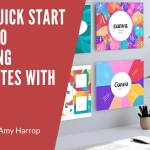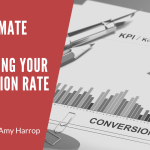
You’ve probably heard the saying that you can’t judge a book by its cover.
That’s nonsense. We do it all the time.
Think of the last time you were walking through a bookstore or scrolled through a list of search results on Amazon.
If you weren’t looking for something specific the chances are good that you stopped in your tracks or clicked on a book because of the cover.
It caught your eye. Maybe it was bright and colorful. Perhaps it featured a surprising image. It might have included a picture of a something you love.
Whatever the reason, the cover is what grabbed you. In fact, the right cover can increase your clicks when you market your book and lead to a bump in sales, too.
What does that tell us about the importance of book cover design?
The design that you choose for the cover of your self-published book can turn your book into a success… or it can make your book face into obscurity.
So, what makes for a compelling and effective book cover?
Colors
The colors you choose for your book cover play a big role in the way readers perceive it. All colors have emotional and psychological impact. Red can signify passion, anger, or danger. Blue is calming and serene, while yellow is a bright and happy color.
Which colors are right for your book?
Here are some things to ask to help you figure it out:
- Who are the people in my target audience?
- What were they looking for when they found my book?
- What feelings do I want them to associate with my book?
For example, say you’re publishing a gardening planner. You might choose green for your cover because it’s so strongly associated with nature and plants.
Fonts
The title of your book and your name will be defined by the fonts you choose. Different fonts evoke different feelings and perceptions.
In some cases, your book cover may feature multiple fonts. Using a blend of fonts can make your book cover more visually appealing than using only one.
Fonts are divided into categories:
- Serif fonts are traditional and conservative
- Sans serif fonts are clean and modern
- Script fonts are creative and romantic
- Novelty fonts are unique and playful
Script and novelty fonts should be used sparingly. The two key things to remember when choosing your fonts are:
- They should be easy to read. If a potential buyer can’t read your title and name, they’re not going to buy your book.
- They should fit your brand. Using a wacky novelty font will make people think about you in a different way than they would if you used a clean, modern font.
In other words, your fonts should give readers some insight into who you are and help to sell your book.
Images
Not every self-published book needs a cover image. Sometimes, a well-chosen selection of fonts can be enough.
However, in many cases the right image can enhance potential buyers’ perception of your book and make them eager to buy it.
You have lots of options when it comes to choosing an image for your book cover. You might use:
- A photo or illustration that is inspired by your book’s content
- A symbol or symbols that represent something in your book
- An original photo or design
- A stock photo that’s been manipulated to fit your book
You can use an image as the background for your title and name or, if you prefer, the image can be self-contained, and your title can appear elsewhere in the design.
Your Name
The placement of your name on a book cover can make a big difference in how people think of you and your books.
Some well-known authors put their names above the book title. That’s typical when a writer is a brand until themselves. A good example is Stephen King.
In self-publishing, it’s common for writers to brand themselves as authorities in their niche. If you’ve already got a following from your blog or social media accounts, you may want to put your name above the title on y our book cover.
However, with some low content books – such as journals, planners, and adult coloring books – your name may be less important than the title you choose.
When that’s the case, it may make more sense to put your name below the title.
Regardless of which option you choose, your name should be clear and legible.
Thumbnail
One of the most important considerations when you design the cover for your self-published book is how it looks in a thumbnail.
Think about it. If you plan to sell your book on Amazon, the first image any potential reader sees of the cover is going to be a thumbnail.
You may be able to use a slightly-larger-than-thumbnail version of your cover if you promote your book on Facebook, Twitter, or a book promotion site, but it’s still going to be smaller than the full cover.
That means you need a cover with:
- Fonts that are readable even when they’re in a thumbnail
- An image that’s clear and works in both a thumbnail and a full-size cover
- Your name in letters large enough to be seen in a thumbnail
- Something with enough visual appeal to catch readers’ eyes when they’re scrolling through their Facebook or Twitter feed.
If your cover design does all of that, you’ll be in good shape when it comes to marketing your book.
Where to Find a Designer
You may decide to design your book cover on your own. If you’re comfortable with design there’s nothing wrong with a DIY cover.
That said, it doesn’t have to be expensive to hire a designer to do it for you. There are lots of designers willing to do book covers for reasonable prices. Here are some places to try:
If you decide to take this route, make sure to ask for samples first and put your contract in writing to protect yourself.
Choosing the right design for the cover of your self-published book will help you with multi-channel book promotion and increase your book sales.



